The Future of Unmanned Underwater Systems
Interview with Liquid Robotics' Graham Hine
Launched to listen to the songs of humpback whales, Liquid Robotics has evolved into a harvester of data from the sea. Graham Hine of Liquid Robotics shares with MTR his insights on the future direction of unmanned underwater systems, and more specifically, his company’s role.
Mr. Hine, please tell us a bit about yourself.
I am Graham Hine, Senior Vice President of Product Management and one of the founders of Liquid Robotics. By training I’m a software engineer and started my career at Centigram developing embedded systems. Entrepreneurial ventures hold a special place in my heart and I’ve had the good fortune to participate in them throughout my career, participating at every level and starting two of my own. As a kid, I was accused of being a fish in the ocean, always the last out of the water at the beach. At Liquid Robotics, I’ve been able to marry these two joys of mine, building a company from the ground up that’s helping the world better understand our oceans.
For the benefit of our readers, briefly describe your company and your specific offering to the AUV market.
Our genesis began on the Big Island of Hawai’i where the Wave Glider was born. Joe Rizzi, the chairman of the Jupiter Research Foundation, had a love for the song of the Humpback Whales as they wintered in Hawai’i. He set off to design a way to capture their singing and pipe it to shore. After a few years of experimentation, he enlisted my Dad and brother, Derek and Roger Hine, to come up with a design. A mechanical engineer, Roger figured out a way to convert the up and down motion of ocean waves into forward thrust. By harvesting the energy of the ocean waves you don’t need fuel. You don’t produce emissions and you can stay out for long periods of time.
In 2005, we began extensive prototyping and testing. We started with a model of a Wave Glider in a fish aquarium and then advanced to my pool and then to sea. We quickly realized we had a product that had broad commercial application and one that could help better measure and understand our oceans.
In January of 2007, Liquid Robotics was incorporated. Since this time, we’ve built and deployed over 300 Wave Gliders, amassed over 425,000 nautical miles at sea, navigated and communicated through 16 hurricane-class storms and conducted 100s of customer missions globally in some of the harshest ocean conditions in the world – from the Arctic and Antarctica.
So summarize the company’s offering today.
We produce and sell the Wave Glider. It’s the world’s first wave and solar propelled, Unmanned Surface Vehicle (USV). What is important is we’re at the surface of the ocean. We are able to persistently collect and communicate data at the boundary between the sea and air. Think of us as the communications hub connecting the undersea world of acoustics to the world of air and radio. This is vitally important since, until now, there has not been a cost effective, long endurance, unmanned platform that can bridge undersea sensors or vessels to aerial, shore, or space systems. We describe this capability as seafloor-to-space communications.
The Wave Glider is equipped with sophisticated sensors, computing, communications and navigation systems and can be sent off across an ocean or to a specific location to observe and monitor for months or up to a year at a time. We are able to accomplish this without using fuel, without manpower, and without harming the environment. A few examples of how we help commercial and government customers are:
Scientists can get real time information from seafloor tsunami sensors to warn coastal communities if they are threatened.
Governments can detect illegal offshore activities such as smuggling, unlicensed fishing, and environmental damage.
Oil & Gas companies can better monitor their subsea infrastructure.
Commercial sites can communicate with their AUVs and submarines instead of waiting for them to surface to find how their jobs are going.
Describe the trajectory of AUV use over the past five years.
Looking back five years in the AUV market, I think about where Liquid Robotics was in 2010. At that time, we had been conducting extensive, long duration mission testing of the Wave Glider and had just begun selling commercially to the Navy and Oil & Gas companies. We learned a great deal with systems at sea for months and actually our longest has been 2. 5 years. There were challenges – bio-fouling, shark bites and more. But the platform had proven itself to us, and we knew we could prove this technology to the world and that there was a market.
Over the next five years, we focused on safety, durability, software and sensor integration and worked with partners to create affordable solutions. Other AUVs/ASVs manufacturers have also focused on improving performance, duration at sea, and remote capabilities. The AUV/ASV industry has come a long way in the past five years, proving the effectiveness of the technologies and ability of these systems to conduct missions not feasible by manned systems.
How would you describe the maturity of the market today?
We’re at an exciting time in the unmanned systems market and at the beginning or initial stages of commercial acceptance of the AUV technology. In my view, the market is still in the early stages of adoption and customers are just beginning to understand how transformative AUV and ASV technology will be.
However, the ASV/AUV path was paved by our unmanned aerial companies who, decades ago, were where the AUV maritime world is today and are now experiencing a rapid and sustained market growth. Customers today understand the cost and risk mitigation benefits of unmanned systems. However, the primary markets have a historically slow adoption rate. Specifically, I’m referencing the Oil & Gas and Government markets. These markets are showing encouraging signs as they are now incorporating unmanned vehicles in their long range strategic planning and budgets.
In your opinion what are the top technologies that are driving the AUV market further, faster, today?
In my view it is straightforward. The first is the advancement in commercial computing and communications. The technologies are increasing in performance while decreasing in power consumption and price. This enables companies like us to design more compute and communication capabilities into the platform making it possible to compute and process data at sea versus waiting to do so on shore. The more processing and application intelligence we can move to the ocean the greater our abilities to understand the dynamics at the surface and subsurface.Second are software technologies with an emphasis on autonomy. The intelligence of the USV comes from the operating environment. Deploying 100s to 1000s of USVs, ROVs, AUVs and other unmanned systems requires sophisticated, open standards based software to enable interoperability, communications and safety at sea. At Liquid Robotics, we’ve invested greatly in this area and have one of the world’s best software engineers leading our architecture. Dr. James Gosling, the creator of JAVA, is our Chief Software Architect and has guided the team that designed Regulus, the Wave Glider operating environment based on Linux and of course, JAVA. In my opinion, software innovation and application development for unmanned systems is the most exciting field and will have the biggest impact on business growth and scientific discovery.
When we discuss unmanned systems, particularly ROVs, we often discuss “getting the diver out of the water.” From where you sit, what are the main market uses today and how (or is) that changing.
It’s become almost cliché to say that robotics are best applied to dull, dirty, and dangerous tasks. ROVs have, in many of the most dangerous cases, taken the “diver out of the water.” Persistent (long duration) USV’s like Wave Glider are helping to keep the “sailor out of the storm.” This allows offshore energy companies to explore when they could not otherwise economically do so. It allows regulators to insist on monitoring they could not otherwise contemplate. And it enables mankind to be a better custodian of our marine resources. These market uses: exploration and survey, environmental and meteorological assessment, and surveillance and assessment will see unmanned surface vehicles in uses around the globe.
How is your company investing?
Liquid Robotics is investing heavily in engineering in the areas of safety, power systems/management, platform reliability, software (both core systems and data delivery) and integration tools. Our strategy is to develop the world’s best, unmanned surface vehicle and work with partners to innovate and integrate sensors, payloads and develop applications. It’s important to build out software and hardware integrator’s toolkits for easy integration and support with training and go-to-market programs.
Big picture, what signs or indicators do you monitor to gauge the future direction of the market? What are those signs/indicators telling you now?
As we discussed, we see many positive indicators regarding the health of the AUV market. Historically slow unmanned systems adopters such as the Oil & Gas customers are now increasing their use of AUVs, ROVs, and ASVs for environmental monitoring, meteorology/oceanography, and security. Their pilots and proof of concepts using ASVs in some of the harshest environments such as the Arctic have shown great success. In the Navy the Chief of Naval Operations is mandating the use of unmanned systems to augment naval assets for enhanced and cost effective surveillance for underwater warfare. These are very encouraging signs for the health of the AUV/ASV market.
Please provide one case study where your system was deployed to complete an operation more safely and/or efficiently.
Many missions come to mind, yet I’ll share the NOAA Pacific Marine Environmental Laboratory (PMEL) mission in the Arctic. As part of a multi-displenary mission, two Wave Gliders were deployed in the Beaufort Sea for two months. Their task was to measure the water temperatures at the sea-air interface to determine how the melting galciers were affecting the oceans’ temperatures. After collecting 900,000 measurements, while being calibrated against U.S. satellites and NOAA buoys, the Wave Gliders were able to collect data in greater densities and in greater resolution than ever before. The in-situ findings determined the water temperatures were higher than previously meausured. The NOAA PMEIL case study, named “Is there a ‘‘new normal’’ climate in the Beaufort Sea?” can be found at the url:
www.polarresearch.net/index.php/polar/article/view/19552
(As published in the APRIL 2015 edition of Marine Technology Reporter - http://www.marinetechnologynews.com/Magazine)




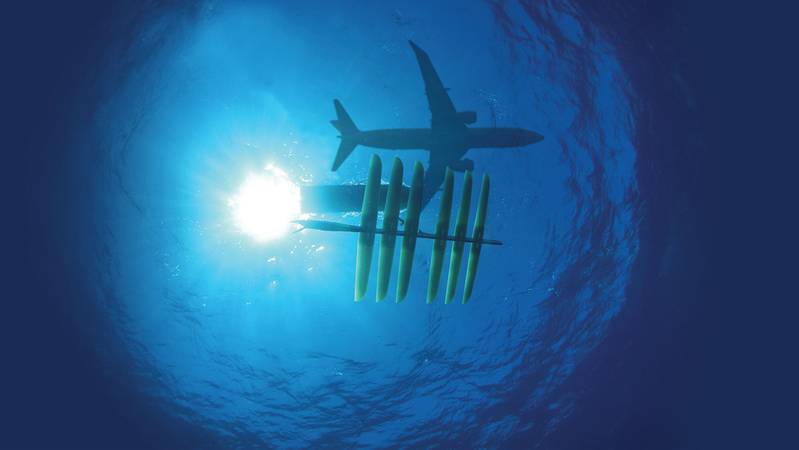

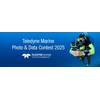
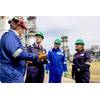
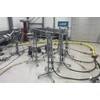
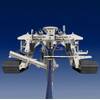
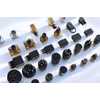







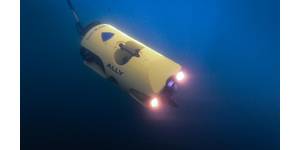
 February 2025
February 2025



